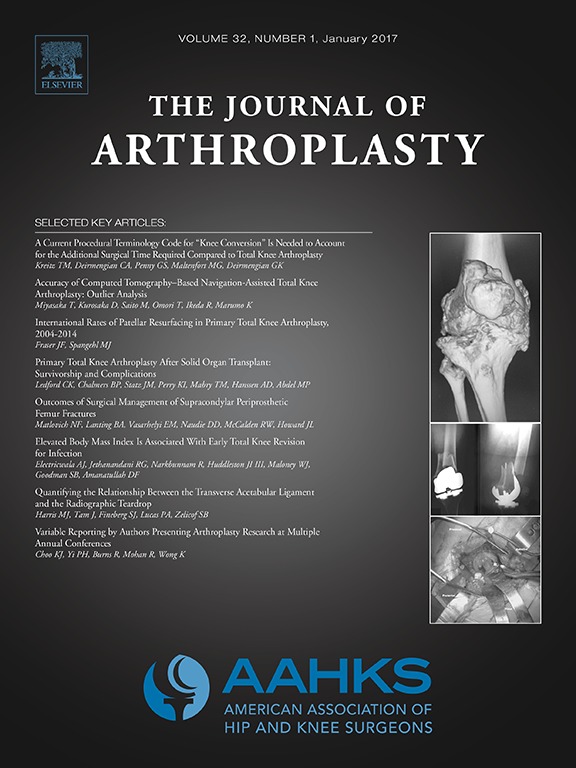
Arthroplasty
Lower incidence of patellar crepitus with patellar resurfacing vs no patellar resurfacing in TKA
J Arthroplasty. 2019 Sep;34(9):1969-1974.Eighty-four patients diagnosed with osteoarthritis and scheduled for a total knee arthroplasty with a posterior-stabilized, fixed-bearing knee system were randomized to receive patellar resurfacing or no patellar resurfacing. Outcomes of interest included the incidence of patellar crepitus (PC), the average time to presentation of PC, the incidence of anterior knee pain, range of motion, the Knee Society Score (KSS), the Oxford score, the Patellar score, and radiographic outcomes. Follow up was performed up to 1 year post-operation. Results revealed significantly lower incidence of PC, and significantly favourable Oxford and Patellar scores at 9 and 12 months, in the patellar resurfacing group compared to the control group. A significantly higher patellar shift index, Insall-Salvati ratio, patellar displacement and patellar height and a significantly lower change in posterior femoral offset was observed in the patellar resurfacing group.
Unlock the full article
Get unlimited access to OrthoEvidence with a free trial
Start TrialCritical appraisals of the latest, high-impact randomized controlled trials and systematic reviews in orthopaedics
Access to OrthoEvidence podcast content, including collaborations with the Journal of Bone and Joint Surgery, interviews with internationally recognized surgeons, and roundtable discussions on orthopaedic news and topics
Subscription to The Pulse, a twice-weekly evidence-based newsletter designed to help you make better clinical decisions
Exclusive access to original content articles, including in-house systematic reviews, and articles on health research methods and hot orthopaedic topics
Or continue reading this full article
Register Now

Subscribe to "The Pulse"
Evidence-Based Orthopaedics direct to your inbox.




































